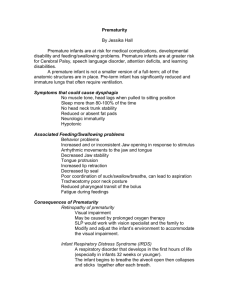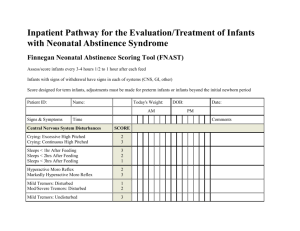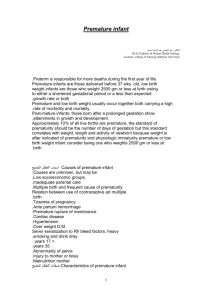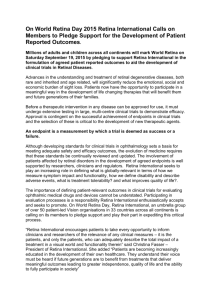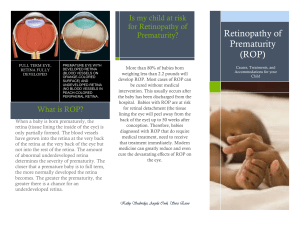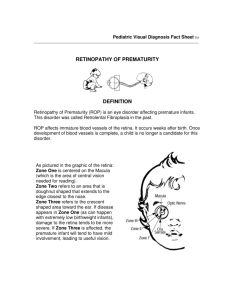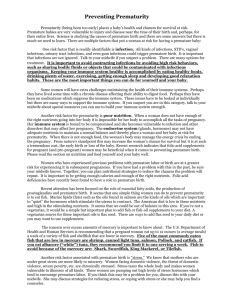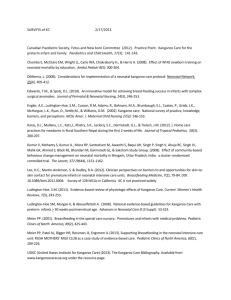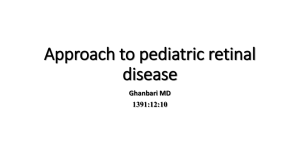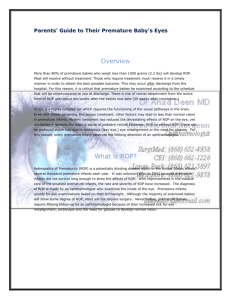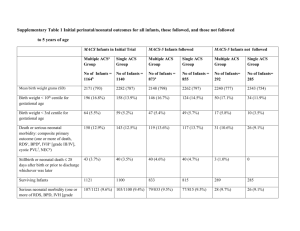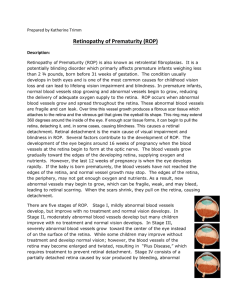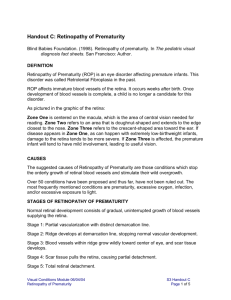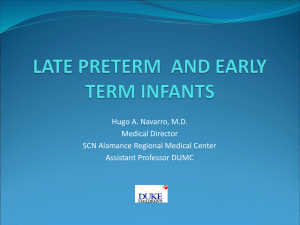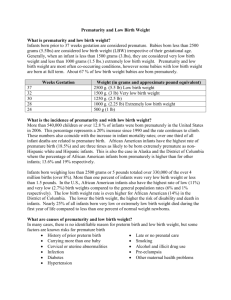High Risk Infants
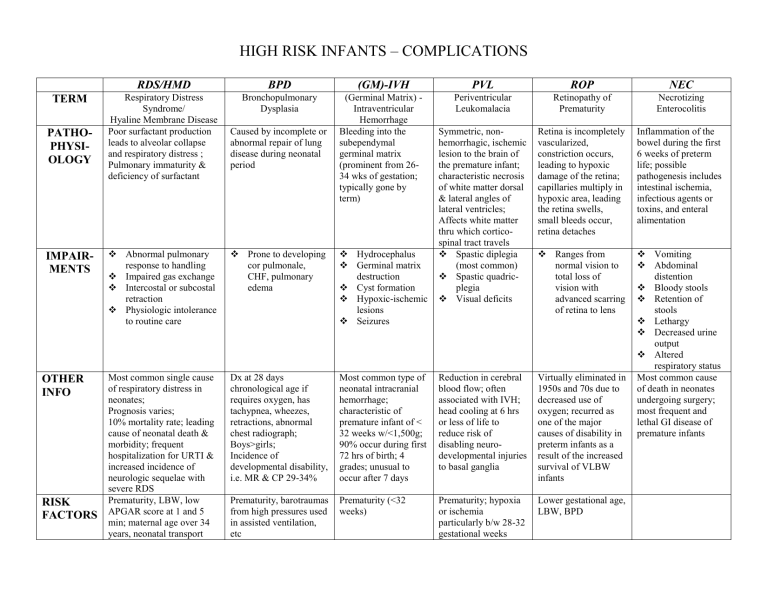
TERM
PATHO-
PHYSI-
OLOGY
IMPAIR-
MENTS
RDS/HMD
Respiratory Distress
Syndrome/
Hyaline Membrane Disease
Poor surfactant production leads to alveolar collapse and respiratory distress ;
Pulmonary immaturity & deficiency of surfactant
Abnormal pulmonary response to handling
Impaired gas exchange
Intercostal or subcostal retraction
Physiologic intolerance to routine care
OTHER
INFO
RISK
FACTORS
Most common single cause of respiratory distress in neonates;
Prognosis varies;
10% mortality rate; leading cause of neonatal death & morbidity; frequent hospitalization for URTI & increased incidence of neurologic sequelae with severe RDS
Prematurity, LBW, low
APGAR score at 1 and 5 min; maternal age over 34 years, neonatal transport
HIGH RISK INFANTS – COMPLICATIONS
BPD
Bronchopulmonary
Dysplasia
Caused by incomplete or abnormal repair of lung disease during neonatal period
Prone to developing cor pulmonale,
CHF, pulmonary edema
(GM)-IVH
(Germinal Matrix) -
Intraventricular
Hemorrhage
Bleeding into the subependymal germinal matrix
(prominent from 26-
34 wks of gestation; typically gone by term)
Hydrocephalus
Germinal matrix destruction
Cyst formation
Hypoxic-ischemic lesions
Seizures
Dx at 28 days chronological age if requires oxygen, has tachypnea, wheezes, retractions, abnormal chest radiograph;
Boys>girls;
Incidence of developmental disability, i.e. MR & CP 29-34%
Most common type of neonatal intracranial hemorrhage; characteristic of premature infant of <
32 weeks w/<1,500g;
90% occur during first
72 hrs of birth; 4 grades; unusual to occur after 7 days
PVL
Periventricular
Leukomalacia
Symmetric, nonhemorrhagic, ischemic lesion to the brain of the premature infant; characteristic necrosis of white matter dorsal
& lateral angles of lateral ventricles;
Affects white matter thru which corticospinal tract travels
Spastic diplegia
(most common)
Spastic quadricplegia
Visual deficits
ROP
Retinopathy of
Prematurity
Retina is incompletely vascularized, constriction occurs, leading to hypoxic damage of the retina; capillaries multiply in hypoxic area, leading the retina swells, small bleeds occur, retina detaches
Ranges from normal vision to total loss of vision with advanced scarring of retina to lens
Reduction in cerebral blood flow; often associated with IVH; head cooling at 6 hrs or less of life to reduce risk of disabling neurodevelopmental injuries to basal ganglia
Virtually eliminated in
1950s and 70s due to decreased use of oxygen; recurred as one of the major causes of disability in preterm infants as a result of the increased survival of VLBW infants
NEC
Necrotizing
Enterocolitis
Inflammation of the bowel during the first
6 weeks of preterm life; possible pathogenesis includes intestinal ischemia, infectious agents or toxins, and enteral alimentation
Vomiting
Abdominal distention
Bloody stools
Retention of stools
Lethargy
Decreased urine output
Altered respiratory status
Most common cause of death in neonates undergoing surgery; most frequent and lethal GI disease of premature infants
Prematurity, barotraumas from high pressures used in assisted ventilation, etc
Prematurity (<32 weeks)
Prematurity; hypoxia or ischemia particularly b/w 28-32 gestational weeks
Lower gestational age,
LBW, BPD
